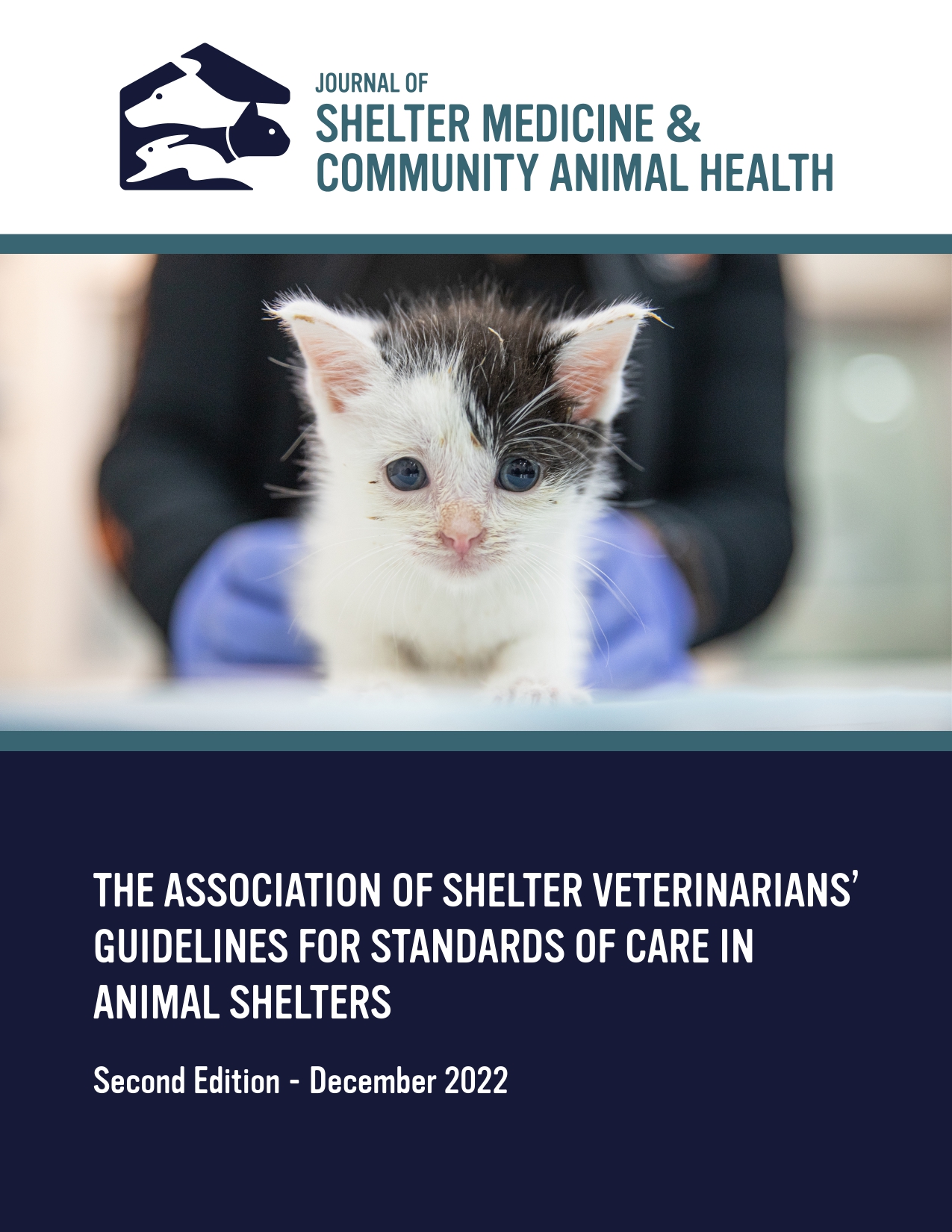Prevalence of and Exposure Factors for Infectious Diseases in Free-Roaming Cats From Two Florida Counties
DOI:
https://doi.org/10.56771/jsmcah.v2.10Keywords:
feral, free-roaming cats, pathogensAbstract
Introduction: Ninety-nine deceased free-roaming cats (FRCs) from two nonadjacent counties (Volusia and Alachua) in Florida were used to determine the prevalence of and associated exposure to pathogens postmortem, including Feline Leukemia Virus (FeLV), Feline Immunodeficiency Virus (FIV), Dirofilaria immitis, Mycoplasma haemofelis, Mycoplasma haemominutum, and Cytauxzoon felis.
Methods: Humanely euthanized FRCs or those FRCs found dead in the community were submitted for postmortem examinations. Blood samples from these FRCs were analyzed using a combination of antibody, antigen, and polymerase chain reaction (PCR) assays.
Results: Male cats were at higher risk of infection for FeLV and FIV, intact cats were less likely to be infected with FeLV, and cats in the Volusia county were more likely to be infected with FIV. Mycoplasma haemominutum had the highest prevalence of all surveyed pathogens in this study, and infections were only identified in male cats.
Conclusion: FRCs in this study had similar or higher prevalence rates of infections compared to studies assessing FRCs enrolled in trap-neuter-return programs from Florida.
Downloads
References
Robertson SA. A review of feral cat control. J Feline Med Surg. 2008;10:366–375. doi: 10.1016/j.jfms.2007.08.003
Loss S, Will T, Marra, P. The impact of free-ranging domestic cats on wildlife of the United States. Nat Commun. 2013;4:1396. doi: 10.1038/ncomms2380
van Heezik Y, Smyth A, Adams A, Gordon J. Do domestic cats impose an unsustainable harvest on urban bird population? Biol Conserv. 2010;143: 121–130. doi: 10.1016/j.biocon.2009.09.013
Kelly PJ, Moura L, Miller T, et al. Feline immunodeficiency virus, feline leukemia virus and Bartonella species in stray cats on St Kitts, West Indies. J Feline Med Surg. 2010;12:447–450. doi: 10.1016/j.jfms.2009.12.015
Kreisler RE, Cornell HN, Levy JK. Decrease in population and increase in welfare of community cats in a twenty-three year Trap-Neuter-Return program in Key Largo, FL: The ORCAT Program. Front Vet Sci. 2019;6:7. doi: 10.3389/fvets.2019.00007
Luria BJ, Levy JK, Lappin MR, et al. Prevalence of infectious diseases in feral cats in Northern Florida. J Feline Med Surg. 2004;6:287–296. doi: 10.1016/j.jfms.2003.11.005
Normand CM, Urbanek RE. Exurban feral cat seroprevalence of feline leukemia and feline immunodeficiency viruses and adult survival. South Nat. 2017;16:1–18. doi: 10.1656/058.016.0102
Stojanovic V, Foley P. Infectious disease prevalence in a feral cat population on Prince Edward Island, Canada. Can Vet J. 2011;52:979–982.
Wikander YM, Anantatat T, Kang Q, Reif KE. Prevalence of Cytauxzoon felis infection-carriers in Eastern Kansas domestic cats. Pathogens. 2020;9:854. doi: 10.3390/pathogens9100854
Grieco V, Crepaldi P, Giudice C, et al. Causes of death in stray cat colonies of Milan: a five-year report. Animals. 2021;11:3308. doi: 10.3390/ani11113308
Kalz B, Scheibe KM, Wegner I, Priemer J. Gesundheitsstatus und Mortalitätsursachen verwilderter Hauskatzen in einem Untersuchungsgebiet in Berlin-Mitte [Health status and causes of mortality in feral cats in a delimited area of the inner city of Berlin]. Berliner und Münchener tierärztliche Wochenschrift. 2000;113:417–422.
Levy JK, Gale DW, Gale, LA. Evaluation of the effect of a long-term trap-neuter-return and adoption program on a free-roaming cat population. J Am Vet Med Assoc. 2003;22:42–46. doi: 10.2460/javma.2003.222.42
Pesavento PA, Murphy BG. Common and emerging infectious diseases in the animal shelter. Vet Pathol. 2014;51:478–491.
Schulz BS, Hartmann K, Unterer S, et al. Two outbreaks of virulent systemic feline calicivirus infection in cats in Germany. Berliner und Münchener tierärztliche Wochenschrift. 2011;124:186–193.
Stern AW, Sula M. The forensic necropsy In: Rogers ER, Stern AW, eds. Veterinary Forensics: Investigation, Evidence Collection, and Expert Testimony. Boca Raton, FL: CRC Press; 2018:189–202.
IDEXX Laboratories. Heartworm-Feline Leukemia Virus-Feline Immunodeficiency Virus Antibody Test Kit. 2009. https://www.idexx.com/files/snap-feline-triple-test-accuracy.pdf. Accessed February 21, 2022.
IDEXX Laboratories. SNAP Feline Triple Test. 2019. https://www.idexx.com/files/snap-feline-triple-test-accuracy.pdf. Accessed February 21, 2022.
Qiagen. DNeasy® Blood & Tissue Handbook. 2016. https://www.qiagen.com/us/resources/download.aspx?id=68f29296-5a9f-40fa-8b3d-1c148d0b3030&lang=en. Accessed February 21, 2022.
Jensen WA, Lappin MR, Kamkar S, Reagan WJ. Use of a polymerase chain reaction assay to detect and differentiate two strains of Haemobartonella felis in naturally infected cats. Am J Vet Res. 2001;62:604–608. doi: 10.2460/ajvr.2001.62.604
Haber M, Tucker M, Marr H, et al. The detection of Cytauxzoon felis in apparently healthy free-roaming Cats in the USA. Vet Parasitol. 2007;146:316–320. doi: 10.1016/j.vetpar.2007.02.029
Lee IT, Levy JK, Gorman SP, Crawford PC, Slater MR. Prevalence of feline leukemia virus infection and serum antibodies against feline immunodeficiency virus in unowned free-roaming cats. J Am Vet Med Assoc. 2002;220:620–622. doi: 10.2460/javma.2002.220.620
O’Connor TP, Tonelli QJ, Scarlett JM. Report of the National FeLV/FIV awareness project. J Am Vet Med Assoc. 1991;199:1348–1353.
Duplan F, Davies S, Filler S, et al. Anaplasma phagocytophilum, Bartonella spp., haemoplasma species and Hepatozoon spp. in ticks infesting cats: a large-scale survey. Parasites Vectors. 2018;11:201. doi: 10.1186/s13071-018-2789-5
Woods JE, Brewer MM, Hawley JR, Wisnewski N, Lappin MR. Evaluation of experimental transmission of ‘Candidatus Mycoplasma haemominutum’ and Mycoplasma haemofelis by Ctenocephalides felis to cats. Am J Vet Res. 2005;66:1008–1012. doi: 10.2460/ajvr.2005.66.1008
Lewis KM, Cohn LA, Birkenheuer AJ. Lack of evidence for perinatal transmission of Cytauxzoon felis in domestic cats. Vet Parasitol. 2012;188:172–174. doi: 10.1016/j.vetpar.2012.02.019
Berdoulay P, Levy JK, Snyder PS, et al. Comparison of serological tests for the detection of natural heartworm infection in cats. J Am Anim Hosp Assoc. 2004;40:376–384. doi: 10.5326/0400376
Published
Issue
Section
License
Copyright (c) 2023 Adam W. Stern, Manavi Muralidhar, Thomas Demagamage

This work is licensed under a Creative Commons Attribution 4.0 International License.










